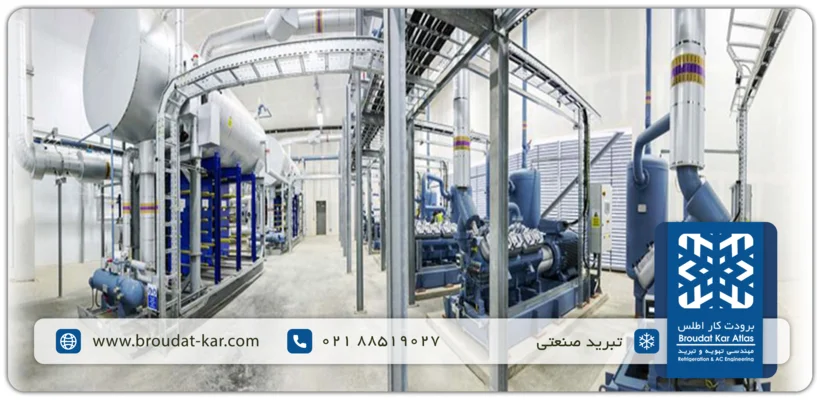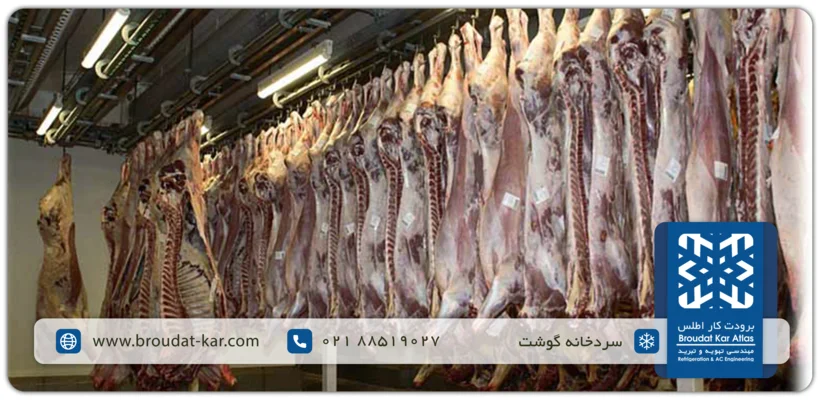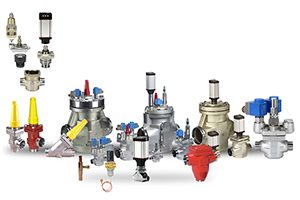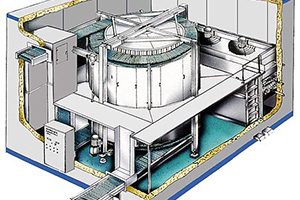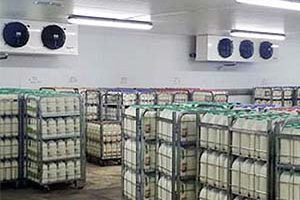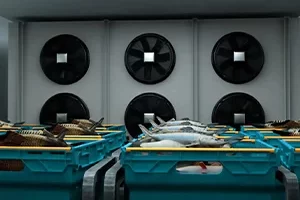What is Industrial Refrigeration?
Industrial refrigeration refers to large-scale cooling systems used to control temperatures in industrial processes, materials, and products. These systems are essential in industries such as food and beverage, petrochemicals, pharmaceuticals, metal production, and large cold storage facilities. The primary purpose of industrial refrigeration is to maintain low temperatures throughout production and storage, ensuring product quality, safety, and energy efficiency in various industrial environments.
Conditions and Features of Industrial Refrigeration
A key feature of industrial refrigeration is its wide temperature range. These systems are capable of operating at temperatures ranging from 7°C, commonly used in air conditioning and cleanroom environments, to as low as -60°C to -70°C, ideal for cold storage, freezing tunnels, and similar applications.
For temperatures below -70°C, such as those used in systems like IQF (Individual Quick Freezing) which rely on liquid nitrogen, the field extends into cryogenics. Cryogenic refrigeration employs substances like liquid natural gas, liquid nitrogen, and liquid carbon dioxide to reach extremely low temperatures of around -200°C.
Industrial refrigeration applications are predominant in the food, chemical, and oil and gas industries, which together account for roughly two-thirds of the total demand.
To better understand industrial refrigeration, it is essential first to grasp the concept of the refrigeration cycle, as industrial refrigeration essentially scales this cycle for large-scale industrial applications.
The refrigeration cycle is a thermodynamic process in which heat is transferred from one environment to another to maintain a specific low temperature. This cycle forms the basis for cooling systems, air conditioning, and industrial refrigeration, serving as the core of most cooling equipment. Below are the main components of the vapor compression refrigeration cycle, one of the most common types:
Key Components of the Vapor Compression Refrigeration Cycle
- Compressor: Increases the refrigerant’s pressure and temperature before directing it to the condenser.
- Condenser: Cools the refrigerant, converting it from a gas to a liquid by releasing heat to the surroundings.
- Expansion Valve: Reduces the refrigerant’s pressure and temperature as it flows through.
- Evaporator: Absorbs heat from the surrounding environment, turning the refrigerant into vapor and providing the cooling effect.
Types of Refrigeration Systems
Industrial refrigeration includes a variety of methods and technologies designed to meet specific needs across different industries. Here are some of the most notable types:
Vapor Compression Cycle
– One of the most common refrigeration methods.
– Uses a refrigerant (typically a gas) in a continuous cycle of compression, cooling, expansion, and heating.
– Transfers heat from a cooler environment to a warmer one, consisting of key components: compressor, condenser, expansion valve, and evaporator.
Absorption Refrigeration Cycle
– An alternative to the vapor compression cycle.
– Utilizes a heat source and an absorbent material instead of a mechanical compressor to increase the refrigerant pressure.
– Suitable for specific applications due to its unique characteristics.
Thermoelectric Refrigeration Cycle
– A more recent approach compared to the previous types.
– Operates based on thermoelectric effects, using semiconductors to convert electrical energy into temperature differences.
– Unlike vapor compression and absorption cycles, it involves no refrigerants or moving parts.
Applications of Industrial Refrigeration
Industrial refrigeration is vital in manufacturing and laboratory environments that require specific low-temperature conditions. It also involves heat pumping, which transfers heat from a high-temperature environment to a lower-temperature one, such as in steel cooling processes. Notable applications include:
Refrigeration in Food Preservation
Lowering the temperature extends the shelf life of food products by delaying microbial growth and spoilage. Proper storage can prolong the consumption period of certain items for over a year.
– Cold Storage for Fruits and Vegetables
– Products like bananas and apples are stored at temperatures above freezing.
– Typically, fruits and vegetables (e.g., bananas, apples, tomatoes, cabbage, lettuce, potatoes, and onions) are stored unfrozen at temperatures ranging from 1°C to 14°C.
– Some fruits can be stored slightly below 0°C without freezing due to dissolved sugars and minerals that lower their freezing point.
– Cold Storage for Protein-Rich Foods
– Includes dairy, meat, poultry, and seafood products.
– Dairy items (e.g., ice cream, cream for confectionery) are stored slightly above freezing.
– Meat products maintain better quality at super-chilled temperatures around -1°C for short-term storage.
– Long-term storage of meat, poultry, and seafood requires temperatures between -18°C and -25°C.
Atlas Refrigeration Co. Ltd, is one of the most experienced companies in the field of industrial refrigeration systems. Our services include the design and construction of various refrigeration solutions, such as cold storage facilities, blast freezers, IQF (Individual Quick Freezing) systems, ice makers, gas distillation systems, and more.
Conclusion
In this article, we addressed the question: What is an industrial refrigeration system? In summary, industrial refrigeration is the backbone of modern industries, playing an indispensable role in everything from preserving food freshness to manufacturing pharmaceuticals. By providing precise, temperature-controlled environments, it ensures high-quality production and extends product shelf life.
At Atlas Company, we offer customized refrigeration systems tailored to your unique requirements, prioritizing energy efficiency and enhancing productivity. From initial consultations to help you choose the best system, to installation, setup, and comprehensive after-sales support, we are here to assist you at every stage.
Industrial refrigeration operates on a much larger scale with greater technical complexity compared to household systems. It is designed to maintain lower temperatures and withstand harsher environments, requiring precise control of temperature and humidity levels.
Several factors determine the appropriate type of industrial refrigeration system, including:
- The type of product or material to be cooled
- Environmental conditions
- Budget constraints
- Safety regulations and standards
The choice of refrigerant depends on factors like operating temperature, pressure requirements, environmental impact, and safety regulations. Common refrigerants include:
- Ammonia
- Carbon dioxide (CO₂)
- Hydrocarbons
- Certain synthetic gases
Each refrigerant is sen based on the specific needs of the application.
Related posts
Industrial Refrigeration
Valves and Control Devices in Ammonia and Freon Refrigeration Systems The variety of valves and control devices in refrigeration systems
Individual Quick Freezing (IQF) IQF or Individual Quick Freezing is commonly used for freezing fruits, berries, vegetables, French fries, shrimp,
What is Industrial Cold store? An industrial cold store is a large-scale facility designed and constructed to preserve and
What is Blast Freezer and How is it Used? Atlas Refrigeration Co., Ltd. specializes in manufacturing and installing advanced blast
